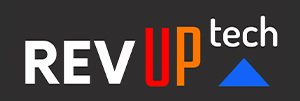Django
The three day course explores Django the most popular and high-level Python Web framework that encourages rapid development and clean, pragmatic design. It’s free and Open Source and since it is built with the Python language, it offers codes that are robust and increases productivity.
3 days - $1,895.00
Course taught by an expert Computer Coding Instructor.
Prerequisites:
Knowledge of advanced computer coding is essential. Python knowledge is also required.
Course Outline
Introduction to Django
About Django
Django Components
Installing & Configuring Django Components
Django Pre-Requisites
Downloading & Installing Django
Choosing a Database
Creating a New Project
Generating Simple Django Views
About View Functions
Using Django's HttpResponse Class
Understanding HttpRequest Objects
Using QueryDict Objects
Configuring URLconf's
About URLconf
Regular Expressions
Expression Examples
Simple URLConf Examples
Using Multiple URLConf's
Passing URL Arguments
About Templates
Template Fundamentals
Creating Template Objects
Loading Template Files
Filling in Template Content (Context Objects)
Template Filters
Template Tags
More on For Loops
Template Inheritance
Easy Rendering of Templates
RequestContext Processors
Global Context Processors
Forms
Getting Data From the Request Object
A Simple Form-Handling Example
Making a Contact Form
Tying Form Objects Into Views
Database Models with Django
About Database Models
Configuring Django for Database Access
Understanding Django Apps
About Django Models
Defining Django Models
Understanding Model Fields & Options
Table Naming Conventions
Creating A Django Model
Adding the App to Your Project
Validating the App
Generating & Reviewing the SQL
Adding Data to the Model
Primary Keys and the Model
Simple Data Retrieval Using a Model
Understanding QuerySets
Applying Filters
Specifying Field Lookups
Lookup Types
Slicing QuerySets
Specifying Ordering in QuerySets
Common QuerySet Methods
Deleting Records
Managing Related Records
Retrieving Related Records
Using Q Objects
Creating Forms from Models
Using the Django Admin Interface
Enabling the Admin Interface
Creating an Admin User
Access Control with Sessions and Users
Cookies & Django
The Django Session Framework
Sessions in Views
Session Tuning
Installing Django User Authentication
Using Authentication in Views
Login and Logout
Building your Own Login/Logout Views
Authentication Decorators
Adding & Deactivating Users
Asynchronous Messaging
Managing Permissions
Simple Generic Views
Using Generic Redirects
Other Generic Views
Create/Update/Delete Generic views
Deploying Django Applications


